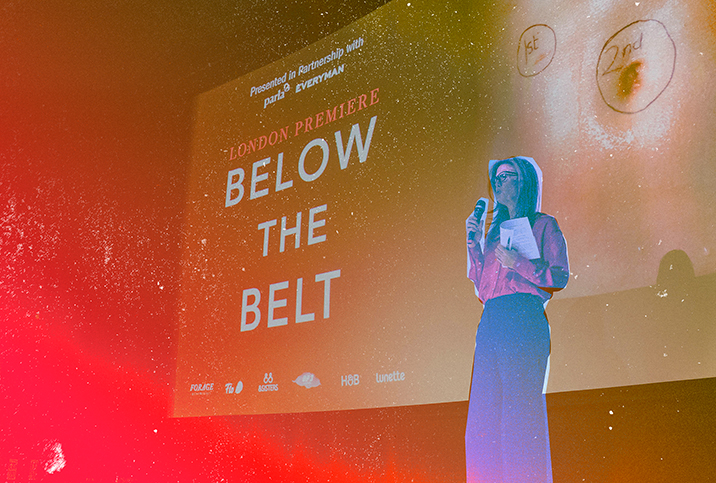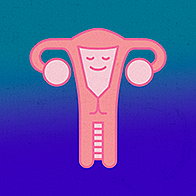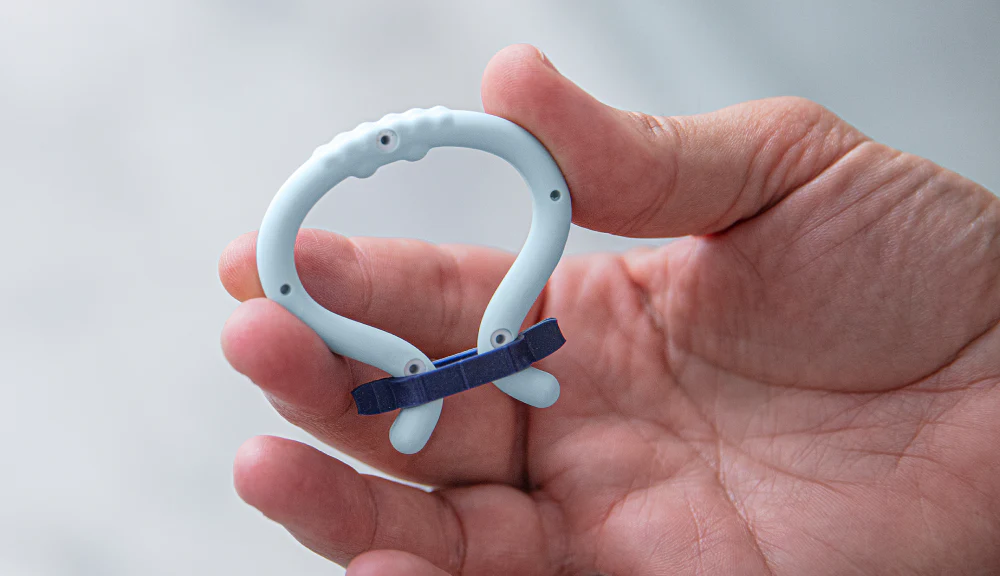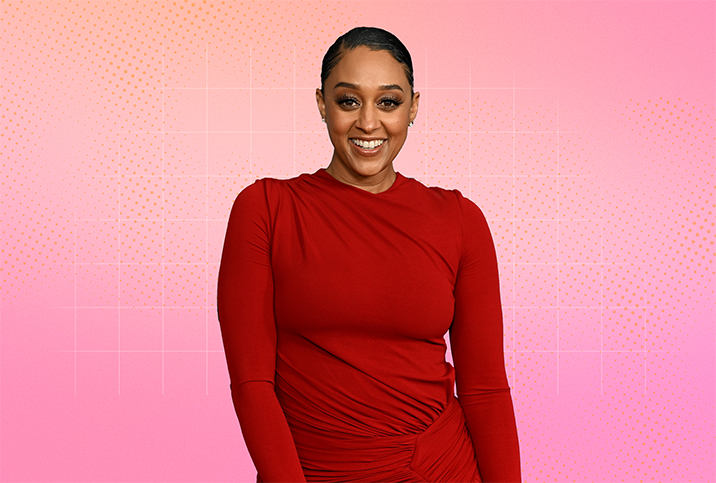'Below the Belt' Brings Endometriosis Into Mainstream Conversation

When New York City-based director and producer Shannon Cohn revealed to people around her that she was working on her second documentary about endometriosis—a debilitating chronic condition in which tissue similar to that found in the lining of the uterus starts to grow in other parts of the body—she was met with a number of skeptical responses.
"Why are you making a movie about a disease that people can't even pronounce?" she recalls a friend asking her.
For Cohn, who suffers from endometriosis herself, the answer was simple.
At the European premiere of her documentary "Below the Belt" in London, she told the crowd that as soon as she learned endometriosis was seven times more likely to develop in girls who had a mother with the disease, she knew she didn't want her daughters to have to fight for the right to a diagnosis and treatment—as she and millions of other women around the world had.
But this was only one of Cohn's many reasons for making the film.
"We created 'Below the Belt' as a way to bring endometriosis into mainstream conversation; to communicate honest and authentic stories of people who live and try [their] best to thrive with endometriosis despite multiple hurdles put in their way," Cohn told Giddy. "We want to show the world not only the personal impact of endometriosis on those who have it and their loved ones, but also the systematic issues at play that contribute to the needless suffering of 200 million people on the planet."
'Systematic issues at play contribute to the needless suffering of 200 million people on the planet.'
Cohn's first film on endometriosis, "Endo What?" was released in 2016 and sought to provide an accurate base of knowledge about endometriosis delivered by experts. "Below the Belt" furthers this mission by giving viewers a glimpse into the lives of four endometriosis patients, including a practicing nurse and a high school student, as they learn how to navigate life with this debilitating condition.
The star-studded team of executive producers includes former Secretary of State Hillary Rodham Clinton and actresses Rosario Dawson, Mae Whitman and Corinne Foxx.
Despite the increasing dialogue surrounding endometriosis in the past few years, many people still seem to be under the impression that it's "just bad period pain." However, as the film shows, this couldn't be further from the truth.
Among one of several heartbreaking scenes, we see one of the subjects of the film, Emily Hatch Manwaring, who was 17 at the time, get ready for her third surgery within the space of two years. "I fake a lot of my life," she tells viewers while walking through the corridors of her high school. Although Manwaring was fortunate to be diagnosed as a teenager and is now a college graduate and a videographer and events coordinator in Provo, Utah, her suffering continues.
Endometriosis has no cure, and although several treatments are available, none are guaranteed to provide permanent relief. Throughout the film, we see all four of the subjects undergo extensive surgery to help them retrieve their quality of life.
By the end of the film, some of them start to return to some sense of normalcy.
Although this scenario is reassuring for viewers who may be considering surgery to treat their endometriosis, it's important to remember that surgery is not a definitive cure for endometriosis symptoms.
The documentary hopes to bring viewers into the world of these individuals so they can begin to visualize what life is truly like for people who suffer from the condition as well as the healthcare professionals who treat endometriosis.
Shaheen Khazali, M.D., a specialist endometriosis surgeon in Woking, England, said despite his many years of experience treating endometriosis patients, the film opened his eyes to the reality of the disease.
"I have to confess, as an endometriosis surgeon who spends all his working hours listening to endometriosis patients and hears their stories, I didn't expect to learn anything new from a movie on endometriosis. I was wrong," Khazali admitted. "Shannon has done such a great job in telling the stories and showing how endometriosis affects people around the patient, too.
"I really think 'Below the Belt' is a movie for everyone. Not just endometriosis patients or people around them. Not just GPs [general practitioners], not just policymakers. Everyone," Khazali added.
Of course, the making of this film was somewhat bittersweet. After all, why should it take a film to raise awareness for a condition that affects millions of women? A recent survey conducted by the Alliance for Endometriosis found 90 percent of people with endometriosis feel as if they are disbelieved, dismissed or ignored by others on a monthly basis.
Nighat Arif, M.R.C.G.P., a general practitioner in Beaconsfield, England, and TikTok personality who advocates for women's health, believes the problem with endometriosis diagnosis and treatment is deeply rooted in larger institutional issues.
"If we, as a collective, work through institutional misogyny, racism, patriarchy [and] internalized misogyny and become invested allies in women's health, then waves of change will happen for the future generations," Arif said.
In one scene in the film, Jenneh Rishe, a Los Angeles-based registered nurse, explained that despite her extensive medical experience, she often finds the only way to be taken seriously by healthcare professionals is by bringing her husband with her to appointments.
Since filming, Rishe has gone on to release a book, "Part of You, Not All of You: Shared Wisdom and Guided Journaling for Life With Chronic Illness," as well as found a nonprofit organization, the Endometriosis Coalition, with the mission to raise awareness, promote reliable education and increase research funding for endometriosis.
Rishe is hopeful that by sharing her story through the film, change will be prompted.
"For people to understand endometriosis. I needed to show what living with endometriosis truly looks like," Rishe told Giddy. "The only way to really do that is to show all sides of it; the ones behind closed doors that no one gets to see. I'm hoping the film helps the general public see how life-altering and devastating this disease is for both those who suffer and the ones who love and support them."
As for Cohn, her crusade continues: "For at least the next year, I will be focused on creating a meaningful impact with the film, from medical education and policy initiatives to global, widespread awareness campaigns."
"Below the Belt" is an important film to watch, and not just if you or someone you know has endometriosis. Its raw and painful portrayal of endometriosis is enlightening for people who still don't understand the dramatic impact the disease can have on a person's life.
"This movie needs to find its way to every classroom, university, medical school, workplace, social media platforms, mainstream TV and every government building where policymakers need to understand the internalized pain we carry as women on a daily basis," Arif concluded.
You can purchase tickets for the virtual premiere of "Below the Belt" here.




















